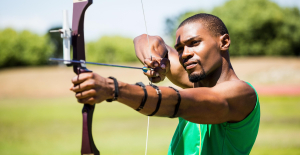Japanese researchers have devised an up-to-the-minute guide to calming crying babies. Parents should carry their crying child close to their own body for about five minutes at a steady pace, if possible without abrupt movements, reports the team in the respected journal Current Biology. As soon as it falls asleep, they should sit with it for about eight minutes and only then put it down to sleep.
"Many parents suffer from their babies crying at night," says lead author Kumi Kuroda of the Riken Center for Brain Science (CBS) in Wako. "It's a huge problem, especially for inexperienced parents, that can lead to parental distress and, in a few cases, even infant abuse."
Kuroda's scientists developed the 13-minute concept in test runs with 21 infants under four conditions: the children were kept walking or sitting and placed in an unmoved or rocking bed - such as a stroller that was moved back and forth. The reactions were recorded, and the babies' heartbeats were recorded via an EKG.
Crying infants calmed down in about 30 seconds and their heart rate slowed when the mother walked while carrying them. All babies stopped crying, almost half of them fell asleep. If the mothers then tried to put their sleeping babies to bed, more than a third of the children woke up within 20 seconds. If they slept a few minutes before being laid down, they were noticeably less likely to wake up.
There was a similarly good calming effect with the rocking bed or stroller. It was far less effective when the mother held the baby in a sitting position or placed it in an unmoved crib. The heart rate of the babies then even increased. This was also the case when the mothers turned or stopped abruptly while walking with their baby.
Another finding of the team: walking for several minutes only helps sleep when babies are crying. "Surprisingly, this effect was absent when babies were already quiet," Kuroda said. Although only mothers were involved in the experiment, the researchers assume that the effect should be similar for all caregivers.
They also have an explanation for the calming effect of walking: the so-called transport reaction. This innate effect can be observed in many young mammals - such as mice and monkeys - that are not yet able to take care of themselves. The hatchlings will calm down and their heart rate will drop when picked up and carried around.
The scientists emphasize that the results of their small series of experiments would have to be confirmed in more specific experiments with larger samples. Then they want to use the findings for a business idea: a wearable device for babies that allows parents to see data like their child's heart rate in real time on their smartphones.

 United States: divided on the question of presidential immunity, the Supreme Court offers respite to Trump
United States: divided on the question of presidential immunity, the Supreme Court offers respite to Trump Maurizio Molinari: “the Scurati affair, a European injury”
Maurizio Molinari: “the Scurati affair, a European injury” Hamas-Israel war: US begins construction of pier in Gaza
Hamas-Israel war: US begins construction of pier in Gaza Israel prepares to attack Rafah
Israel prepares to attack Rafah Spain is the country in the European Union with the most overqualified workers for their jobs
Spain is the country in the European Union with the most overqualified workers for their jobs Parvovirus alert, the “fifth disease” of children which has already caused the death of five babies in 2024
Parvovirus alert, the “fifth disease” of children which has already caused the death of five babies in 2024 Colorectal cancer: what to watch out for in those under 50
Colorectal cancer: what to watch out for in those under 50 H5N1 virus: traces detected in pasteurized milk in the United States
H5N1 virus: traces detected in pasteurized milk in the United States Private clinics announce a strike with “total suspension” of their activities, including emergencies, from June 3 to 5
Private clinics announce a strike with “total suspension” of their activities, including emergencies, from June 3 to 5 The Lagardère group wants to accentuate “synergies” with Vivendi, its new owner
The Lagardère group wants to accentuate “synergies” with Vivendi, its new owner The iconic tennis video game “Top Spin” returns after 13 years of absence
The iconic tennis video game “Top Spin” returns after 13 years of absence Three Stellantis automobile factories shut down due to supplier strike
Three Stellantis automobile factories shut down due to supplier strike A pre-Roman necropolis discovered in Italy during archaeological excavations
A pre-Roman necropolis discovered in Italy during archaeological excavations Searches in Guadeloupe for an investigation into the memorial dedicated to the history of slavery
Searches in Guadeloupe for an investigation into the memorial dedicated to the history of slavery Aya Nakamura in Olympic form a few hours before the Flames ceremony
Aya Nakamura in Olympic form a few hours before the Flames ceremony Psychiatrist Raphaël Gaillard elected to the French Academy
Psychiatrist Raphaël Gaillard elected to the French Academy Skoda Kodiaq 2024: a 'beast' plug-in hybrid SUV
Skoda Kodiaq 2024: a 'beast' plug-in hybrid SUV Tesla launches a new Model Y with 600 km of autonomy at a "more accessible price"
Tesla launches a new Model Y with 600 km of autonomy at a "more accessible price" The 10 best-selling cars in March 2024 in Spain: sales fall due to Easter
The 10 best-selling cars in March 2024 in Spain: sales fall due to Easter A private jet company buys more than 100 flying cars
A private jet company buys more than 100 flying cars This is how housing prices have changed in Spain in the last decade
This is how housing prices have changed in Spain in the last decade The home mortgage firm drops 10% in January and interest soars to 3.46%
The home mortgage firm drops 10% in January and interest soars to 3.46% The jewel of the Rocío de Nagüeles urbanization: a dream villa in Marbella
The jewel of the Rocío de Nagüeles urbanization: a dream villa in Marbella Rental prices grow by 7.3% in February: where does it go up and where does it go down?
Rental prices grow by 7.3% in February: where does it go up and where does it go down? Even on a mission for NATO, the Charles-de-Gaulle remains under French control, Lecornu responds to Mélenchon
Even on a mission for NATO, the Charles-de-Gaulle remains under French control, Lecornu responds to Mélenchon “Deadly Europe”, “economic decline”, immigration… What to remember from Emmanuel Macron’s speech at the Sorbonne
“Deadly Europe”, “economic decline”, immigration… What to remember from Emmanuel Macron’s speech at the Sorbonne Sale of Biogaran: The Republicans write to Emmanuel Macron
Sale of Biogaran: The Republicans write to Emmanuel Macron Europeans: “All those who claim that we don’t need Europe are liars”, criticizes Bayrou
Europeans: “All those who claim that we don’t need Europe are liars”, criticizes Bayrou These French cities that will boycott the World Cup in Qatar
These French cities that will boycott the World Cup in Qatar Archery: everything you need to know about the sport
Archery: everything you need to know about the sport Handball: “We collapsed”, regrets Nikola Karabatic after PSG-Barcelona
Handball: “We collapsed”, regrets Nikola Karabatic after PSG-Barcelona Tennis: smash, drop shot, slide... Nadal's best points for his return to Madrid (video)
Tennis: smash, drop shot, slide... Nadal's best points for his return to Madrid (video) Pro D2: Biarritz wins a significant success in Agen and takes another step towards maintaining
Pro D2: Biarritz wins a significant success in Agen and takes another step towards maintaining


















